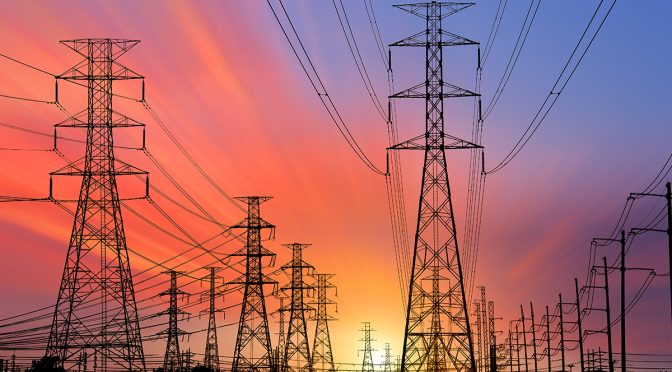There are many factors that affect the stability of an electrical network at any given time. The most common challenge is matching supply with demand.
The amount of energy consumers need varies depending on the time of day and weather conditions or even a national holiday or major event.
In the United States, for example, many people install festive lights for the Christmas season, turning them on from just after Thanksgiving until New Year’s Day. This creates an estimated additional energy demand of 3.5 billion kWh across the country in the month of December.
“Meanwhile, the supply can also vary for many reasons. Maybe there is a natural disaster or just a storm that takes down a power line. Perhaps there is a technical failure in a plant or it has to undergo scheduled maintenance, running the risk of leaving part of the electricity generation capacity out of service,” they reported.
Even a relatively small imbalance between electricity supply and demand can cause problems. It could mean voltage fluctuations, frequency deviations, or a complete loss of power.
To ensure network stability, Hoymiles states that it is vital to have excellent mechanisms and technologies to manage and monitor network operations. But, increasingly, it is possible to see how the diversification of the sources of electrical energy that feed the grid also has an important impact.
How does sourcing reduce the risk of a power outage?
Most of the time, grid electricity comes from power plants and is distributed via transmission lines. “If there’s a failure or an outage somewhere in that infrastructure, you’re really in trouble; there’s no other source to fill the gap.”
“Diversifying energy sources is a great way to mitigate these vulnerabilities. The more decentralized your energy sources are, the greater the risk. If there is a failure somewhere in your infrastructure, not the entire power supply is eliminated, only a part,” they explained.
Photovoltaics are truly the epitome of decentralized energy production. If every home or business had its own small-scale solar PV installation, that would mean millions of diverse sources to feed the grid and make up the shortfall if a primary source failed.
Why is photovoltaics a great option?
Solar PV is a particularly attractive option for this because it presents very low risk. According to the company, unlike most other renewable sources, harnessing solar energy is easy. You can install a small system in any residential or commercial building that has outdoor space and access to sunlight, adapting it to fit the shape of the building.
“Nowadays we can even install systems on balconies or place them in a lake. And it’s not like we’re going to run out of sunlight anytime soon. The photovoltaic source is an infinite resource, freely accessible and not dependent on complex supply chains. It is not surprising that powering the grid with solar energy is an attractive prospect for any operator seeking to make its network more resilient,” highlighted the manufacturer.
Addressing the challenges of solar energy intermittency
According to Hoymiles, until recently solar energy was not considered a reliable energy source. This is mainly because it depends on sunlight. “In the past, there was little hope of using solar energy if you lived in a country with unpredictable weather, or in winter, when sunlight is limited.”
“This lack of predictability and consistency is not good for network stability. But significant advances in inverter and energy storage technology have helped reduce the impact of some of these problems,” they noted.
Solar energy continues to break expansion records in Brazil and in the world. Image: Freepik
Two types of next-generation inverters are proving revolutionary for grid stability. The first innovation, according to Hoymiles, is the microinverter, which performs the function of converting DC (direct current) energy generated by solar panels into AC (alternating current) energy, used to power devices and buildings.
“Microinverters increase efficiency and maximize uptime and energy production. A traditional string inverter connects an entire line of solar panels in series, converting all the energy from all of these modules at once,” they point out.
Two types of next-generation inverters are proving revolutionary for grid stability. The first innovation, according to Hoymiles, is the microinverter, which performs the function of converting DC (direct current) energy generated by solar panels into AC (alternating current) energy, used to power devices and buildings.
“Microinverters increase efficiency and maximize uptime and energy production. A traditional string inverter connects an entire line of solar panels in series, converting all the energy from all of these modules at once,” they point out.
“But that’s not good for reliability or consistency. If one of these panels fails or is shadowed, it doesn’t matter if the other modules still absorb a lot of sunlight. The energy production of this entire line of panels will fall,” the company emphasized.
Fundamentally, a microinverter converts power from each solar panel individually. This means that if one panel fails or does not receive enough sunlight, the others will continue to operate at full capacity. Therefore, the consumer can generate much more energy and do so much more consistently.
“And then there are hybrid inverters. They also convert DC electricity to AC, but they can convert AC back to DC, so it can be stored in batteries,” they emphasized.
Next-generation battery storage
Hoymiles further commented that there was a big concern about the reliability of solar power: there is no way to generate solar power at night. Because of this, recent improvements in battery storage technology have helped solve this problem.
“We have finally reached a point where high-power batteries can be reliably incorporated into a solar photovoltaic installation. During peak hours, you can use solar energy to charge the batteries (thanks to its hybrid inverter) and then release the energy when you need it. This provides uninterrupted and reliable electricity from the system, even when there is no sunlight,” they concluded.


